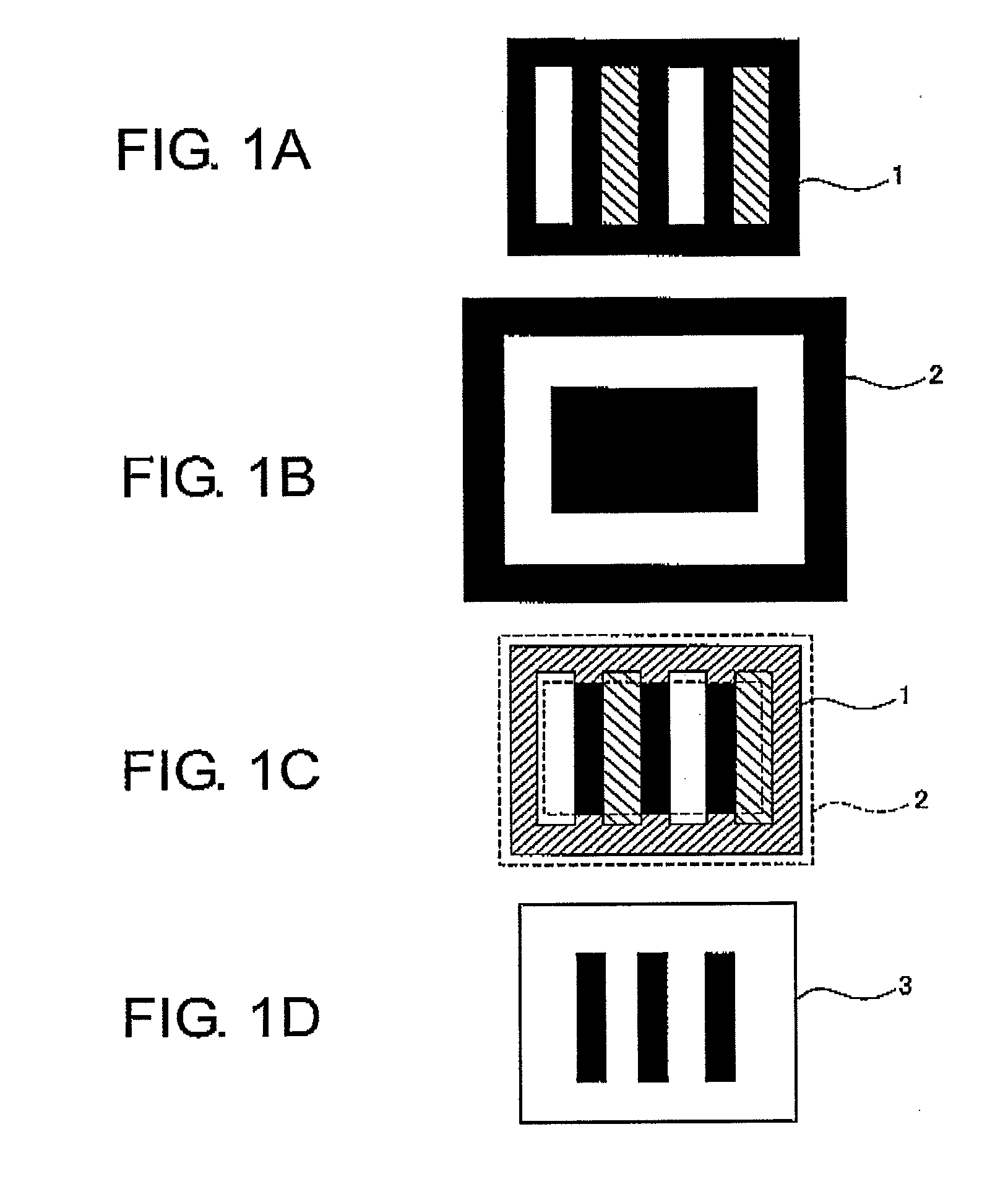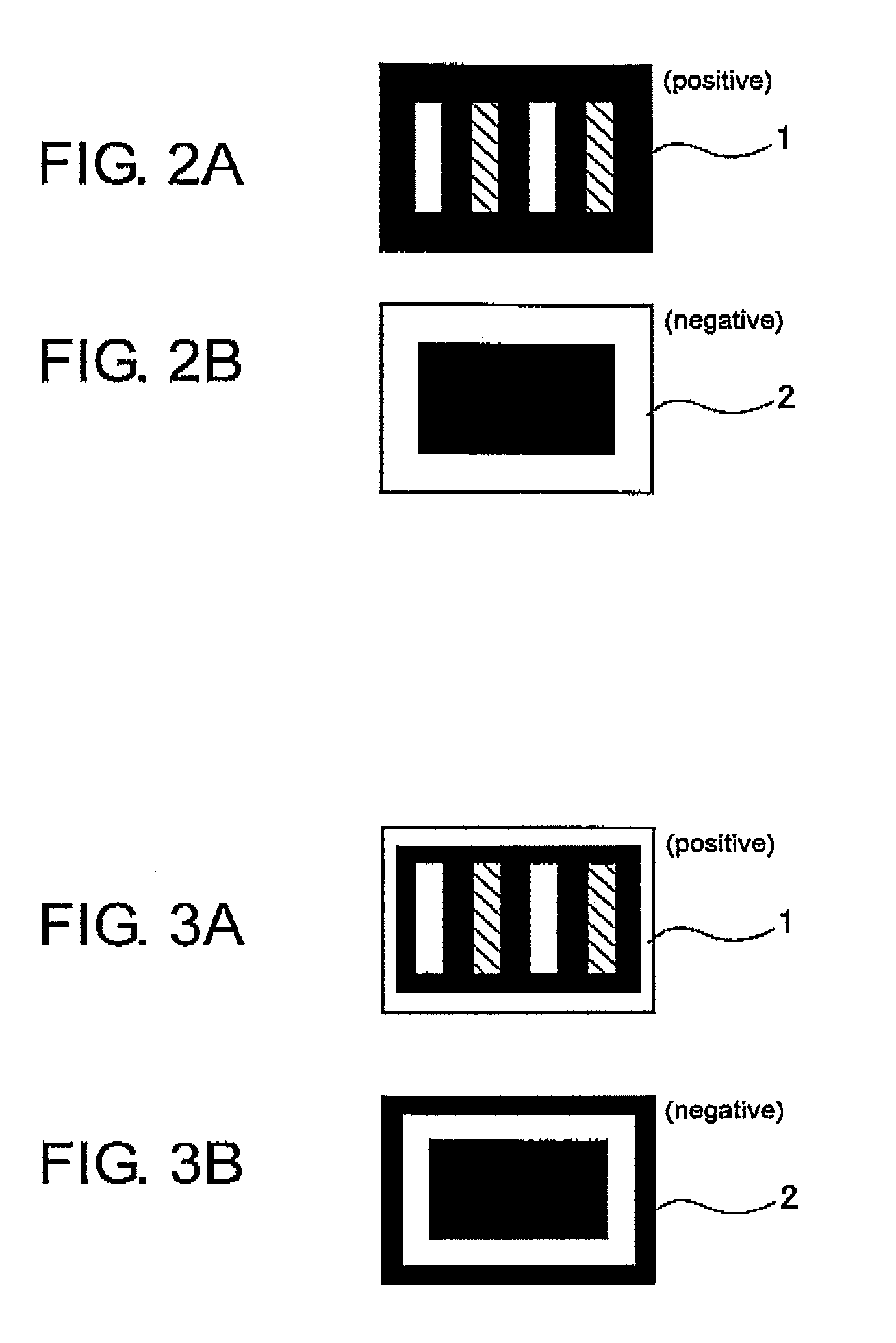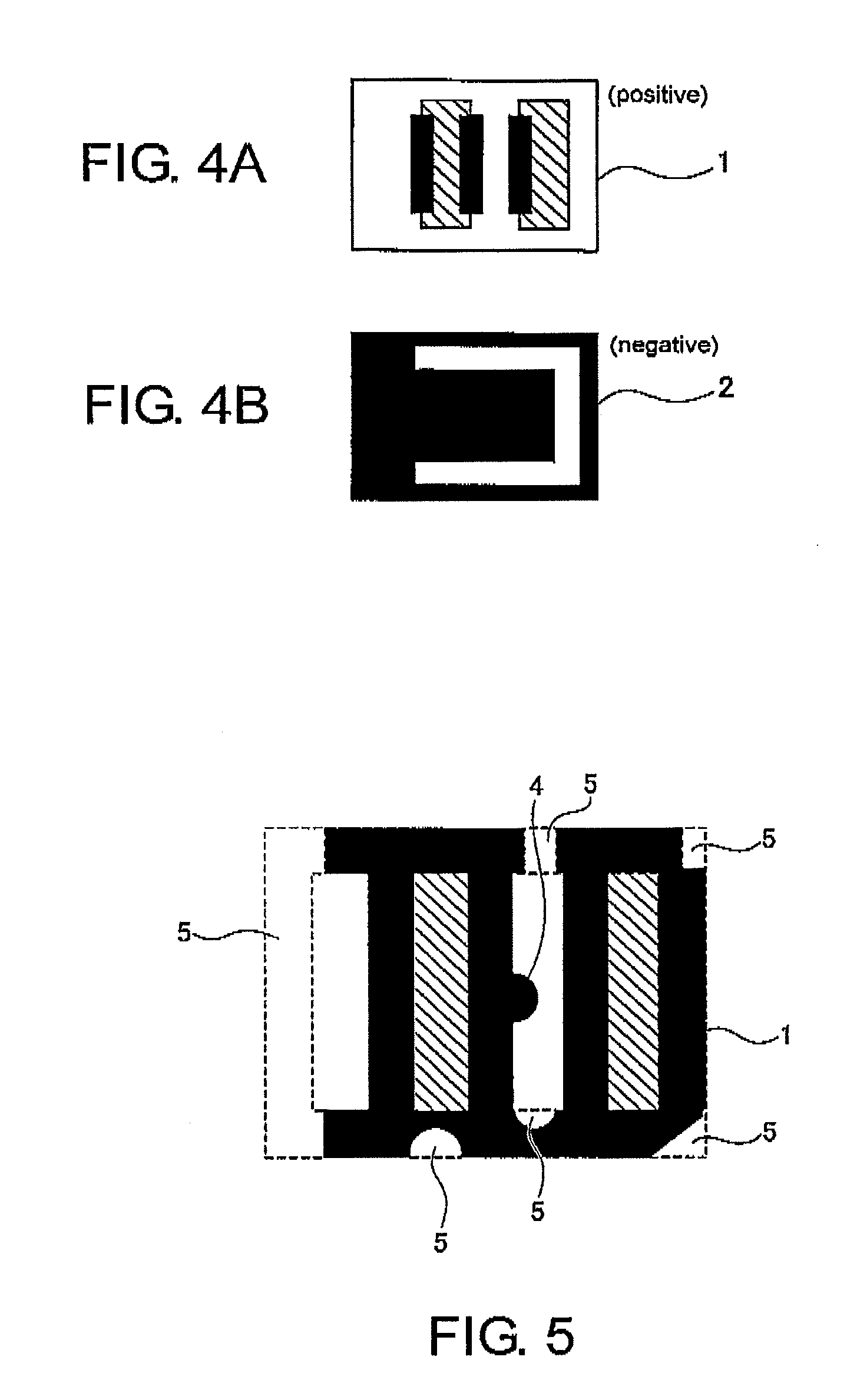Photomask defect correction method, photomask manufacturing method, phase shift mask manufacturing method, photomask, phase shift mask, photomask set, and pattern transfer method
a technology of mask and manufacturing method, which is applied in the field of photomask defect correction, can solve the problems of limited tolerance range for defects, inability to completely avoid pattern shape defects during fabrication, and inability to use the mask as a whole, so as to reduce the workload of defect correction, reduce the workload of manufacturing, and reduce the effect of defect correction
- Summary
- Abstract
- Description
- Claims
- Application Information
AI Technical Summary
Benefits of technology
Problems solved by technology
Method used
Image
Examples
example 1
[0103]FIGS. 7A to 7H are schematic sectional views illustrating a manufacturing process of a Levenson-type phase shift mask 1 according to an example of this invention. Hereinbelow, the example of this invention will be described with reference to FIGS. 7A to 7H.
[0104]As a transparent substrate 11 of the phase shift mask 1, use was made of a quartz glass substrate (having a size of 6 inch square and a thickness of 0.25 inch) having mirror-polished surfaces and subjected to predetermined cleaning. At first, as shown in FIG. 7A, a light-shielding film 12 of chromium was deposited on the transparent substrate 11 to a thickness of 100 nm by sputtering. Then, a positive-type electron-beam resist (“ZEP7000” manufactured by Zeon Corporation) 13 was applied to a thickness of 500 nm by spin coating.
[0105]Next, as shown in FIG. 7B, in order to form a light-transmitting portion, a desired pattern was drawn by electron-beam writing and then developed, thereby forming a resist pattern 31. Then, ...
example 2
[0147]Description will be made of Example 2 where this invention is applied to double patterning.
[0148]First, FIGS. 16A to 16D and 17A to 17G are schematic sectional views illustrating a manufacturing process of two photomasks according to the example of this invention. FIGS. 15A and 15B illustrate generated defects detected as a result of defect inspection of the two masks. The example of this invention will be described with reference to these figures.
[0149]In order to perform patterning on a wafer as shown in FIG. 14C through the double patterning process shown in FIGS. 13A to 13L, two photomasks 10 and 20 as shown in FIGS. 14A and 14B were manufactured.
[0150]The manufacturing process of the photomask 10 shown in FIG. 14A will be described with reference to FIGS. 16A to 16D.
[0151]A transparent substrate 61 is a quartz glass substrate (having a size of 6 inch square and a thickness of 0.25 inch) having mirror-polished surfaces and subjected to predetermined cleaning. At first, a l...
example 3
[0166]Description will be made of Example 3 where this invention is applied to double exposure.
[0167]Schematic sectional views of a manufacturing process of two photomasks according to the example of this invention are similar to FIGS. 17A to 17G and, therefore, are omitted herein. FIGS. 12A and 12B illustrate generated defects detected as a result of defect inspection of the two masks. The example of this invention will be described with reference to these figures.
[0168]In order to perform patterning on a wafer as shown in FIG. 11C through the double exposure process shown in FIGS. 10A to 10H, two photomasks as shown in FIGS. 11A and 11B were manufactured. The manufacturing process of these photomasks is similar to that shown in FIGS. 17A to 17G.
[0169]Defect inspection of the completed two photomasks was performed. As a result, two defects were detected in the first mask as shown in FIG. 12A. One of the defects is a missing defect 841a while the other defect is a Cr residual defect...
PUM
| Property | Measurement | Unit |
|---|---|---|
| thickness | aaaaa | aaaaa |
| thickness | aaaaa | aaaaa |
| thickness | aaaaa | aaaaa |
Abstract
Description
Claims
Application Information
 Login to View More
Login to View More - R&D
- Intellectual Property
- Life Sciences
- Materials
- Tech Scout
- Unparalleled Data Quality
- Higher Quality Content
- 60% Fewer Hallucinations
Browse by: Latest US Patents, China's latest patents, Technical Efficacy Thesaurus, Application Domain, Technology Topic, Popular Technical Reports.
© 2025 PatSnap. All rights reserved.Legal|Privacy policy|Modern Slavery Act Transparency Statement|Sitemap|About US| Contact US: help@patsnap.com



